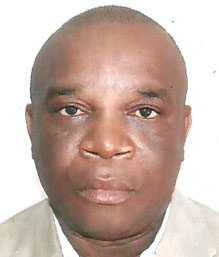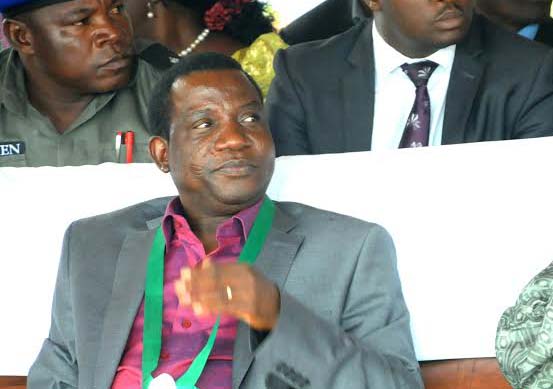Giant caterpillars and others heavy duty earth moving vehicles, including tons of dynamites have been assembled to reduce to rubble and chippings the famous Shere hills, located in Jos east local government of Plateau state. Another iconic tourism site, the Jos Wildlife Park in Jos North local government will also cease to exist and excite tourists as governor of Simeon Lalung has put pen to paper to officially remove their presence from the historical tourism map of temperate city of Jos once noted for its flourishing tourism business in Nigeria.
While Shere Hills despite its famous history as face of tourism in Jos, has been given out for quarry activities as veritable source of chippings and gravels, the Jos Wildlife Park, once famous as tourist facility for in-situ Wildlife beasts and mammals will become a construction garage for a company allegedly fronted by top APC elements in the state said to be close to the governor.
Though the entire deal is shrouded in high secrecy, concerned indigenes who spoke to me noted that cash strapped Lalung government may have sold the iconic tourist assets, particularly the Shere hills with blue chip potentials for quarry business to raise funds but they could not understand the mindless reason behind the sale of the Jos Wildlife Park. Incidentally, both sites are among the very other tourist attractions in Plateau state in its hey days a Nigeria’s foremost tourism destination.
Even though Lalung administration may have been the only one to have so far resisted pressure to drop the sale and destruction of tourism iconic sites in the state, this reporter recalled that were also efforts in the past by lazy government economic egg heads who only saw immediate short – sighted benefits of making quick financial gains from turning the various rock formations in the Plateau into quarry sites and not the long term tourism economic and environmental value chain if allowed to help drive tourism and protect the state from earth quake and tremors.
Advertisement
While other past administrations in the state were resisted by concerned Non-governmental Organizations in Conservation and Environment including tourism experts within and outside Nigeria, the lalung administration which just came back from a tourism investment drive in South-Africa, has cleverly avoided letting the Jos people and Nigerians at large know about this dangerously regrettable agenda.
Unfortunately, for governor lalung, his tourism investment jamboree to South Africa, gave few observers of his negative tourism templates on the iconic sites the needed opportunity to question his sincerity of rebuilding Jos tourism as a construction company began last week to mass around the Shere Hills and Jos Wildlife Park in a desperate attempt to wipe away these sites out of Plateau tourism map.
Sadly, the grave yard silence adopted by the state law makers over the issue appears very alarming as representatives of the communities from the Jos east and Jos north local government areas where these iconic sites are located seemed oblivious of the lurking danger facing the tourism sites and the effect on the environment in general.
Advertisement
Indeed, the law makers in Plateau state may have to vote or veto the governor’s fancy drive walk over on these iconic tourism sites and others targeted but yet to be made public since they were captured by the extant laws of the state. For instance, how could the state governor and the state assembly side-step the state forest reserve law of 10th of December, 1946 as Shere Hills and Jarawa Hills were captured in that law vide extracts from minutes of meeting of the then Bauchi (of which Jos Plateau was once a part) Provincial development committee held on October 1946, while the approval for the establishment of Jos Wildlife Park was conveyed in a memorandum from the secretary, Northern Provinces, Kaduna to Honourable Chief Secretary Lagos under the directives of the Chief Commissioner through an order of Forestry ordinance as Rafin Baruna South Forest reserve of 4th March, 1936. Jos Wildlife Park was later gazetted as a wildlife reserve on 20th October, 1972 and protected by wild animal law (cap 140) which prohibits any human activity that is detrimental to animal health such as presently being carried the APC government backed construction company.
Mr. John Doy, general manager, Plateau State Tourism Corporation (PSTC) denied any knowledge of whatever is going on at those tourism sites and with an air of finality, noted that his hands are tied since the iconic monuments are not under his watch. I also could not reach the state commissioners of Tourism and his counter-part on Environment as their lines could not be reached at the time of this report.
Dr. Mubo Eniola, a former Permanent Secretary, Kogi State Ministry of Tourism and respected tourism industry voice, advised the Plateau State government to retrace its steps concerning these monuments, noting that what the governor need to do is to initiate a process of evaluating the tourism potentials of the state and draw up a road map or master plan of development.
“I truly don’t know if the Plateau state government is serious with tourism or not but I will advise them not to ridicule tourism in Nigeria by doing anything that will degrade these monuments across the state, “he advised, adding” if it is true, then Plateau tourism is dead and it is said”.
Advertisement
Add a comment







